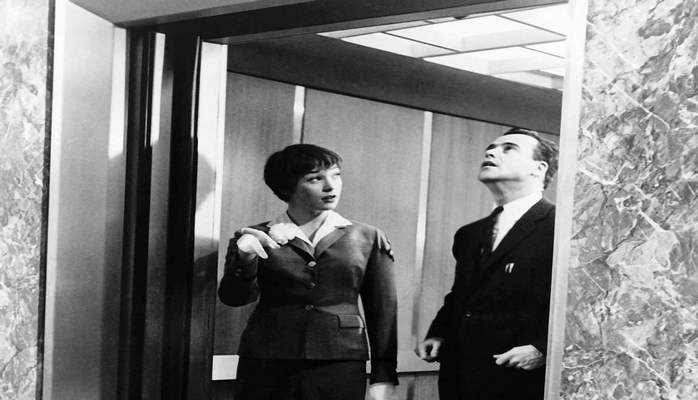
Cough, adjust your jacket, fiddle with your watch strap but, whatever you do, on no account make eye…
Cough, adjust your jacket, fiddle with your watch strap but, whatever you do, on no account make eye contact with anyone
Why is taking the lift so relentlessly, painfully awkward?
We all know the feeling. The anticipation of social embarrassment. The vague sense of unease.
The tension begins as soon as you summon the thing, absently hammering away at the call button, be it in an office, department store, hotel or high-rise block.
The fidgeting starts. You glance sideways to assess what kind of people your fellow passengers might be and realise your current chat with a colleague must come to an abrupt halt, as though you were entering a place of worship.
If one of them is a boss you don't particularly like or have pre-existing beef with, the obligation to engage in small talk against your will is particularly horrid.
When the doors part, you and your peers shuffle inside – picking corners and together adopting the same formations as dots on a dice – and strain to reach past whoever’s stood unhelpfully in the way of the control panel to order the required floor.
A silence like the never-ending emptiness of space descends.
For a short time, you’re volunteering to suspend your autonomy and be trapped in a confined space in unusually close proximity to strangers. It’s simultaneously both weirdly intimate and very alien. There’s nothing in nature quite like a lift.
As you stand there, waiting to be delivered, there’s rarely enough time to do anything else, not even compose a text or scroll through Twitter. So you just stand there, locked in with no obvious means of escape for a brief period of high-intensity concentration, inner monologue racing.
You might cough lightly, adjust your hair, straighten your jacket, flick a speck of fluff from your sleeve or check your watch.
You can’t make eye contact, heaven forbid, so you look at your shoes, pretending the natural fascination with those around you isn’t happening.
The ringing silence forces you to listen to the sound of your own breathing, the gurgling of an empty stomach.
Those who consider themselves enough of a “character” to break with convention and make a joke know they’ll pay for the round of mildly appreciative chuckles to follow by becoming the subject of intense, unspoken scrutiny, speculation and judgement for the remainder of the journey.
This is also true for anyone who carries on their conversation when everyone else has adhered to the implicit social contract and hushed.
As the lift goes about its coldly mechanical business, rising or falling through the floors, your mind wanders.
“What if I got trapped in here like in that film? What if the lift just slams to a halt and the lights go out? Why didn't I take the stairs? What if nobody comes to rescue us...?”
And then, with a jolt and a ping, you’re free.
The doors open, prompting one final embarrassment, the need to “make an exit” as the others clear a path and idly watch you disembark, interested and completely indifferent at the same time.
In many ways, a lift is nothing more than just another means of public transport, bringing you to your destination in the company of others exactly as the Tube or the number nine bus does.
But there’s one crucial difference: no driver.
“You’re in a machine that’s moving, over which you have no control,” Dr Lee Gray of the University of North Carolina, known for his work on the psychology of elevators, told the BBC.
“You cannot see the elevator engine, you don’t know how it’s working.”
What if no one's in charge?
On the surface, the awkwardness we all feel as soon as we step into this metal box to be hauled upwards or plunged down through the dark is about feeling exposed and self-conscious beneath the stark spotlight of the public gaze.
On a more primal level, it’s about the fear of surrendering control, of both our personal space and freedom of movement.
That nagging, reptile brain discomfort is warning you about your unwise entry into a sudden state of helplessness and disempowerment.
You're imprisoned, hanging in the air, until the whim of a machine says otherwise and something about this is very wrong indeed.
This is where claustrophobia comes from. The fear lies in not being able to get out. In this sense, taking the lift touches the same nerve as the horror of being buried alive beneath six feet of dense soil, clawing at the lid of a coffin from within, a subject that once obsessed Edgar Allan Poe to the point of madness.
But Dr Lee insists our lift-related anxieties are entirely irrational.
“It is in in fact of one of the safest forms of transportation, if you look at the billions of miles that lifts travel every year and the very, very small number of accidents.”
Source : indeoendent.co.uk



Comments
Show comments Hide comments